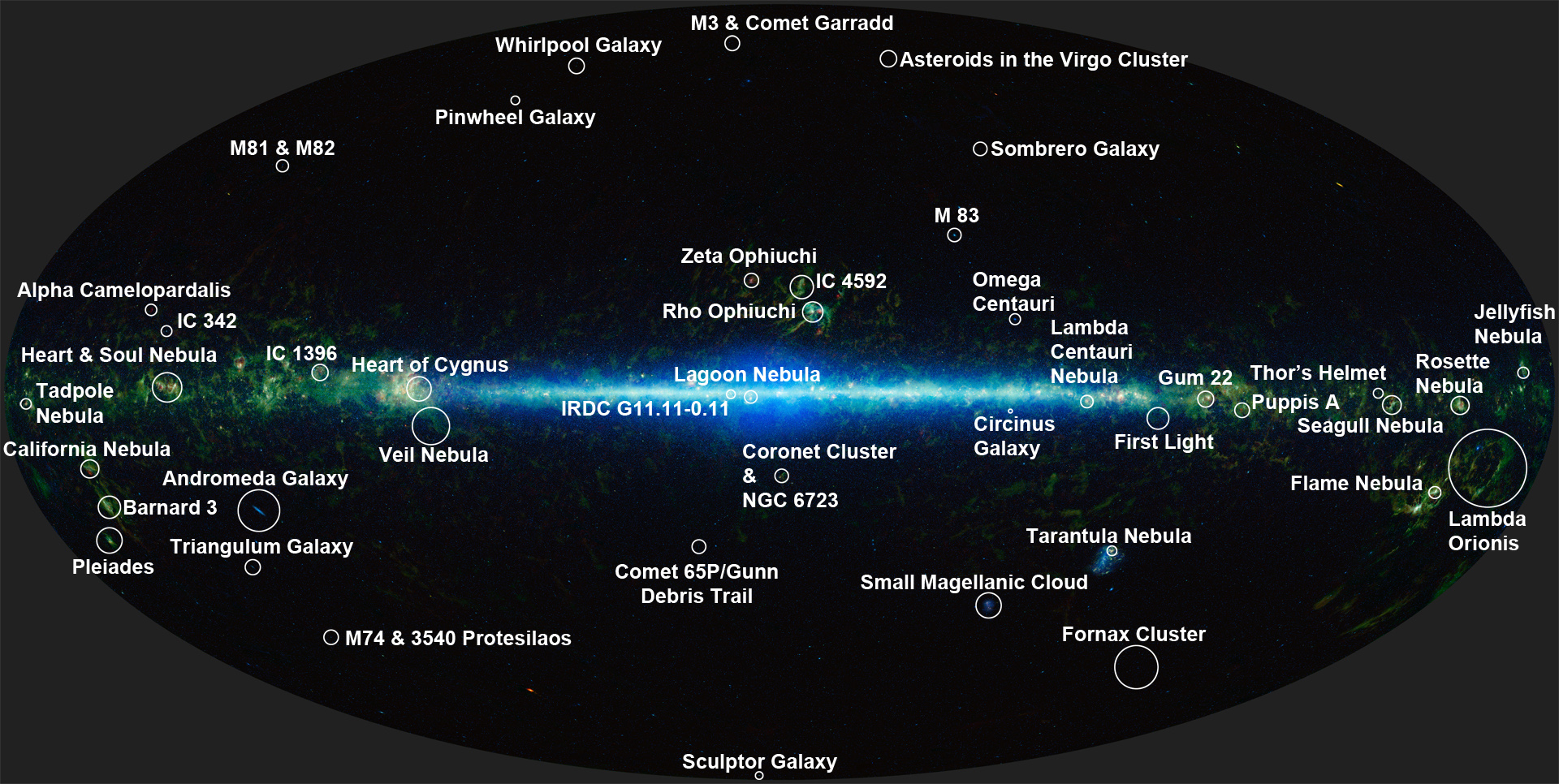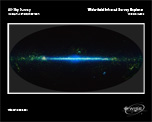



![]()
| The Sky |
|
March 14, 2012 - Mapping the Infrared Universe: The Entire WISE Sky This is a mosaic of the images covering the entire sky as observed by the Wide-field Infrared Survey Explorer (WISE), part of its All-Sky Data Release. The sky can be thought of as a sphere that surrounds us in three dimensions. To make a map of the sky, astronomers project it into two dimensions. Many different methods can be used to project a spherical surface into a 2-D map. The projection used in this image of the sky is called Aitoff, named after the geographer who invented it. It takes the 3-D sky sphere and slices open one hemisphere, and then flattens the whole thing out into an oval shape. Any projection creates distortions, so people tend to use a particular projection type based on where in the resulting map the distortions are minimal. This map is centered on the Milky Way Galaxy. The plane of the Galaxy runs along the equator, and the center of the Galaxy is at the center of the map, where projection distortions are minimal. The distortions are most pronounced at the edges of the map. The right and left edges of this oval shape are the same location in the sky. A second projection of this image is also available, called equirectangular. This method projects the sky into a rectangular shape with Cartesian coordinates, and is useful for planetariums that may wish to display the image on their domes. In this mosaic, the Milky Way Galaxy runs horizontally across this map. The Milky Way is shaped like a disk and the Solar System is located in that disk about two-thirds of the way out from the center. So we see the Milky Way as a band running through the sky. As we look toward the center of the Galaxy we are looking through more of the disk than when we are looking at large angles away from the center, and you can see a noticeable increase in stars (colored blue-green) toward the center of the image. There are some artifacts worth noting in the image. For the image atlas, moving objects such as asteroids and comets were removed. However, some slower moving, bright objects did leave behind residuals. Residuals of the planets Saturn, Mars, and Jupiter are visible in this image as bright red spots off the plane of the Galaxy at the 1:00, 2:00 and 7:00 positions, respectively. In addition, at several locations in the image there are small rectangular shaped features that result from the difficulty in matching background levels of individual atlas frames. With the exception of a few Solar System objects, all of the celestial bodies highlighted in previous featured images from WISE are visible in this map. The annotated version of this map shows the locations of about half of the featured images (the rest were omitted for clarity). Clicking on the name of the object in the annotated map above will open a new browser window showing the featured image for that object. Three of the four wavelengths surveyed by WISE were used to create this image. The colors used in this image represent specific wavelengths of infrared light. Cyan (blue-green) represents light emitted predominantly from stars and galaxies at a wavelength of 3.4 microns. Green and red represent light mostly emitted by dust at 12 and 22 microns, respectively. Image Credit: NASA/JPL-Caltech/WISE Team |
||||||||||||||||||||
|
|||||||||||||||||||||
|
|||

